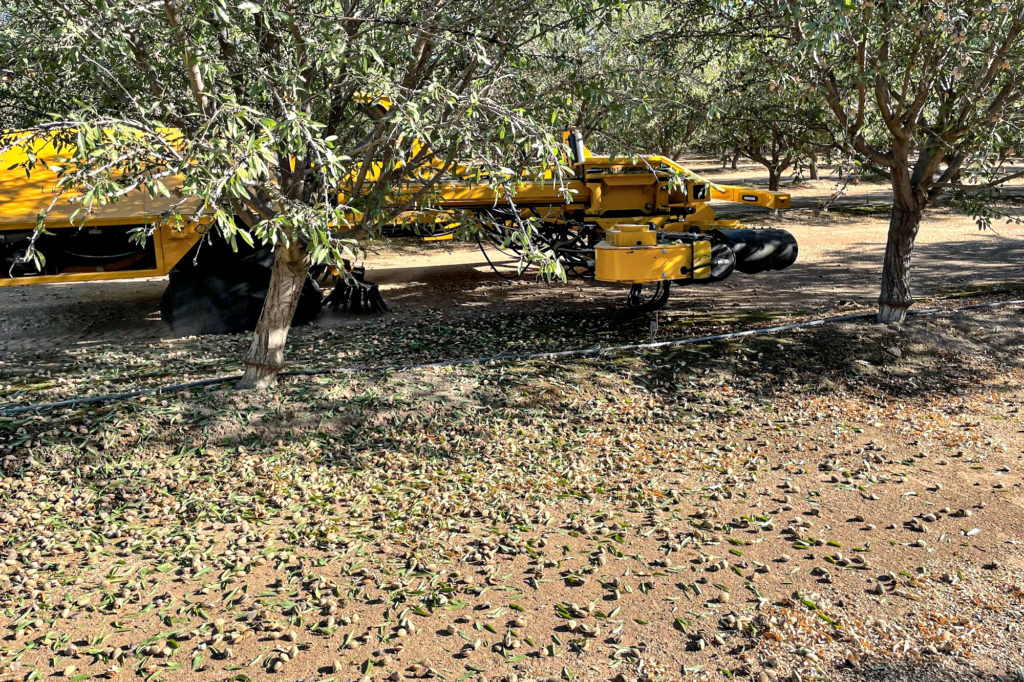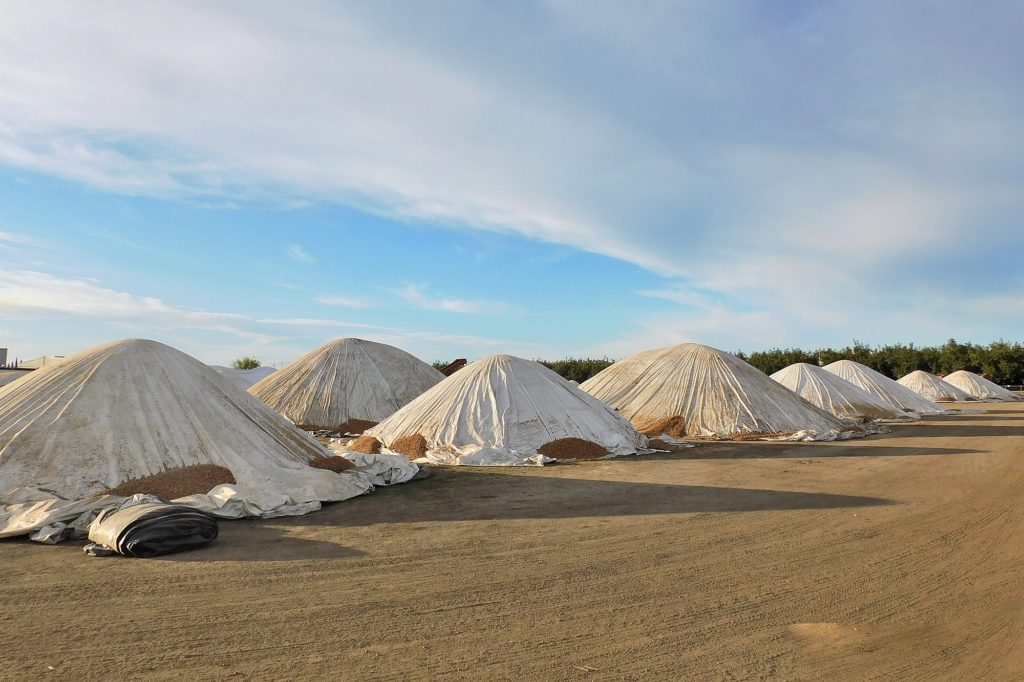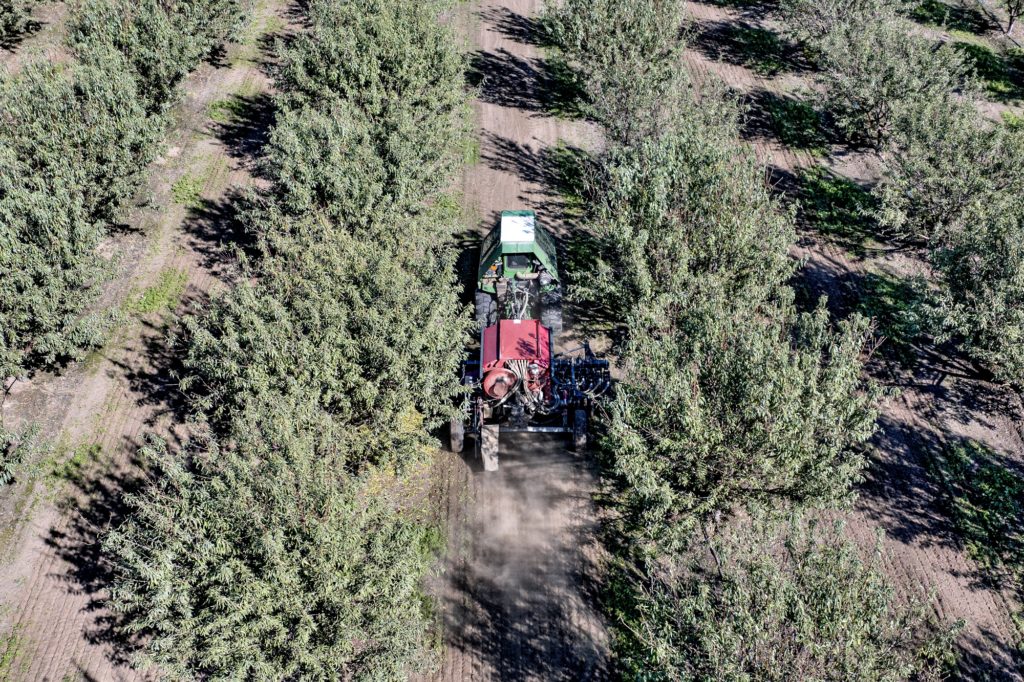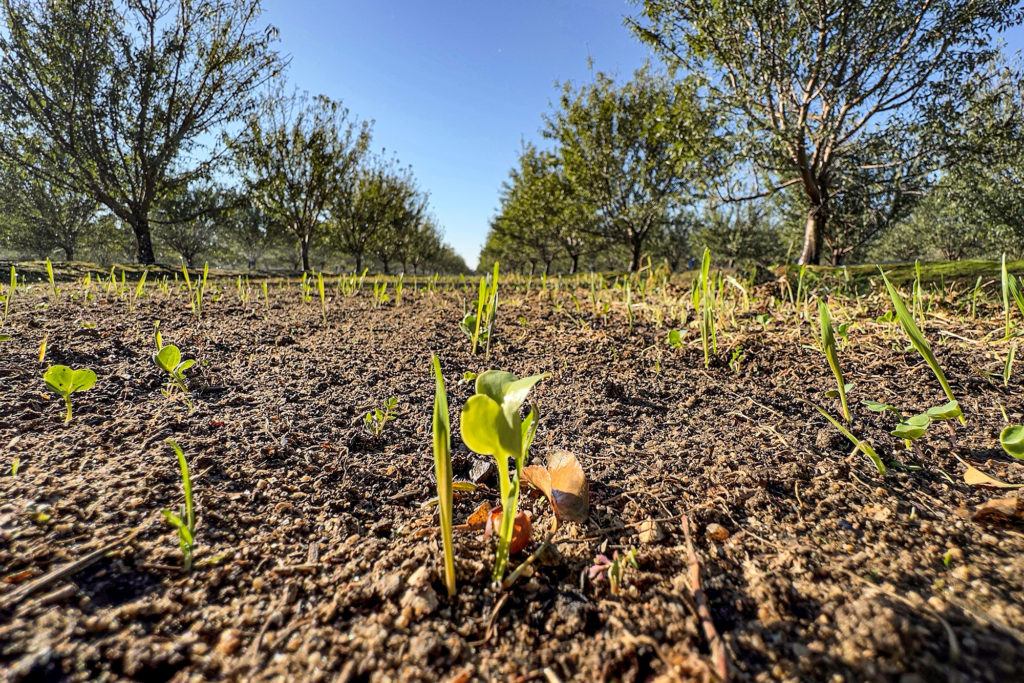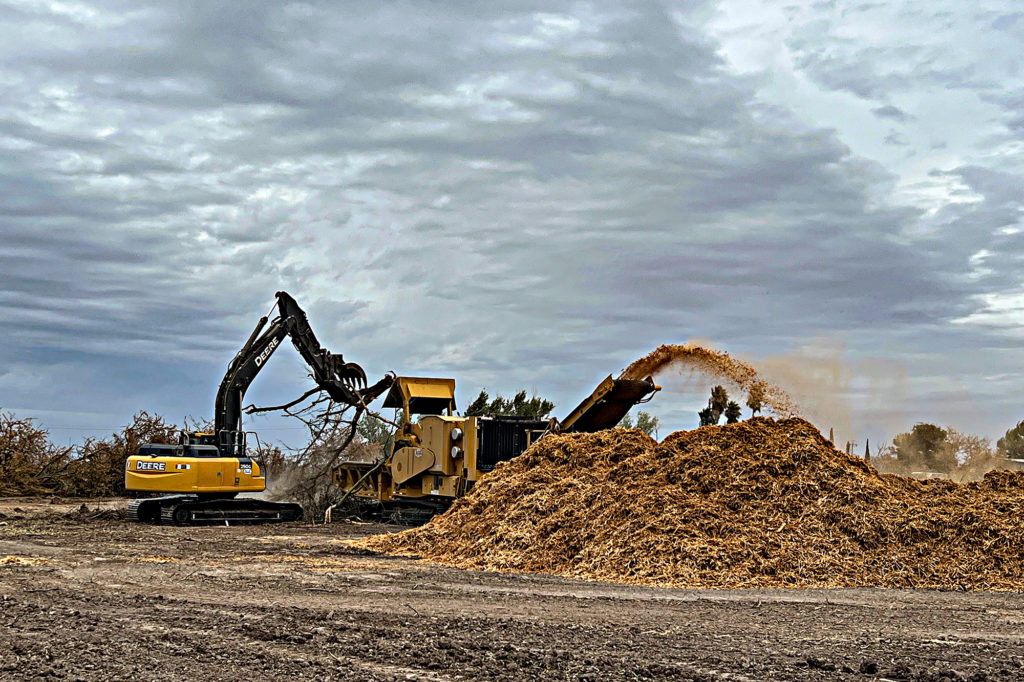
This is the final report of the 2023 crop year, covering the conditions and observations made between Monday, October 2, and Sunday, November 5, 2023. The next report will be posted on or around, Monday, January 29, 2024, prior to the start of the 2024 bloom.
Problematic conditions continued to challenge California’s almond growers during October as they worked to complete the 2023 harvest. Charting the daily maximum temperatures during the period revealed a stairstep effect as temperatures reacted to the passage of each weather system, while also exhibiting the expected end of season cooling. Readings were widely reported in the low to mid 90’s early in the month, and gradually worked their way down to the mid and upper 70’s in the final week of the period. Morning lows followed a similar pattern, descending from the mid-50’s in early October to as low as the mid and upper 30’s as the period concluded. Growers in the coldest locations reported light frost during the final week of October.
Several storm systems dropped enough rainfall during the period to temporarily halt the harvest for many across the Valley. While most areas failed to receive any rainfall, many reported from 0.1 to 1.0 inch. Growers in eastern Stanislaus County received nearly 1.5 inches from a particular virulent cell on October 22.
Progressively shorter daylight hours, heavy morning dew and the sporadic rainfall combined to increase both grower workloads and the risk of additional crop loss as growers struggled to complete the harvest. The diffuse maturity exhibited in the early harvesting varieties has continued into later cultivars, impeding the pace of harvest as growers waited for hulls to split and dry enough for harvest. Reduced daylength, dropping temperatures and increased humidity then conspired to hamper drying while on the ground, further slowing the harvest. Huller/sheller operations have also been impacted. Many are reporting that high moisture pliable hulls are slowing the hulling and shelling process, reducing capacities to 50% to 75% of normal production rates. Many huller/sheller operations have completed their work for the year. However, larger operations with previously stockpiled product will run into the end of November or early December to finish for the year. All have been carefully monitoring moisture levels in product as it arrived from the orchards, concerned with excess moisture in stockpiled crop and the potential for spontaneous combustion of hulls stored after hulling. Crop dryers have operated during much of this year’s harvest as growers delivered immature or “green” product from the orchards. For those receiving rainfall during the period, increased drying costs have added insult to the injury of low market prices and elevated reject levels due to Navel Orange Worm (NOW).
Observers are reporting that the quality impacts noted in the earlier harvesting varieties has continued to plague all varieties as the harvest progressed. This is not a particular surprise as adult NOW emerged from the early varieties to mate and lay eggs on later harvesting Monterey and Fritz. Elevated reject levels have also been noted in Butte and Padre, which many consider to be not susceptible.
As this report is being posted, observers have noted that growers are bringing the crop in from the last few orchards and that the 2023 harvest is essentially complete. As the crop is removed from the orchards, growers quickly convert to a post-harvest mindset. Final irrigations of the year became an immediate concern as local irrigation districts concluded water deliveries for the year. University research has shown that post-harvest irrigation is critical to complete the differentiation of flower buds required for the following crop. Growers also desire to refill the orchard’s rootzone after the stress imposed during the harvest.
Growers are also evaluating their individual results, both in terms of yield and quality, weighing the outcome against the scope of tight cash flows, low market prices and required orchard inputs to place themselves in the best position for the coming year. In this light, normal orchard tasks may be modified or eliminated. Orchard floors must be floated or scraped to smooth the surface that has been disturbed during the harvest. For those planting cover crops, best results are obtained when planted soon after harvest to ensure adequate flowers for foraging honeybees prior to the start of the 2024 almond bloom. Applications of post-harvest potassium fertilizers and soil amendments may be reduced or eliminated due to cost. With the exception of training young orchards and “cleaning up” or therapeutic pruning in mid-life plantings, pruning is one operation that is easily eliminated.
Orchard sanitation, or mummy shaking is getting particularly strong consideration this year in light of the significant losses, totaling hundreds of dollars per acre caused by NOW in the 2023 crop. The elimination of nuts that failed to fall from the trees during the harvest (mummies) is the foundation of NOW control. NOW larvae over-winter in the mummies, emerging as adult moths in late April to mate and lay eggs again on the mummies. The next generation then emerges as the hull split begins on the “new crop,” mates, and lays their eggs on the splitting hulls, infesting the crop. While mating disruption and hull split treatments provide opportunities to control the population during the growing season, removing the mummies from the trees and destroying them using flail mowers is foundational in reducing the population of NOW in subsequent generations. Sanitation also enhances opportunities to ultimately reduce populations using “in-season” controls. Moisture is required for best mummy sanitation. In light of the building “El Nino” weather pattern and the forecast of another wet winter, growers with plantings on heavy soils are taking advantage of the heavy morning dew and the bit of rain they have received to begin the process. While growers traditionally target a sanitation level of no more than two mummies per tree, total elimination is the best option. Several have commented that they are opting to begin shaking now, removing as many as they can and will return to shake again if soil conditions allow later in the winter.
Over the coming winter months, growers will continue their analysis of the past year and the lessons learned to formulate plans for 2024. Operational costs and market conditions will drive many decisions.
By Mel Machado, Vice President of Member Relations
Photos By: KC Stone, Christine Ivory, Ashley Correia and Mel Machado

